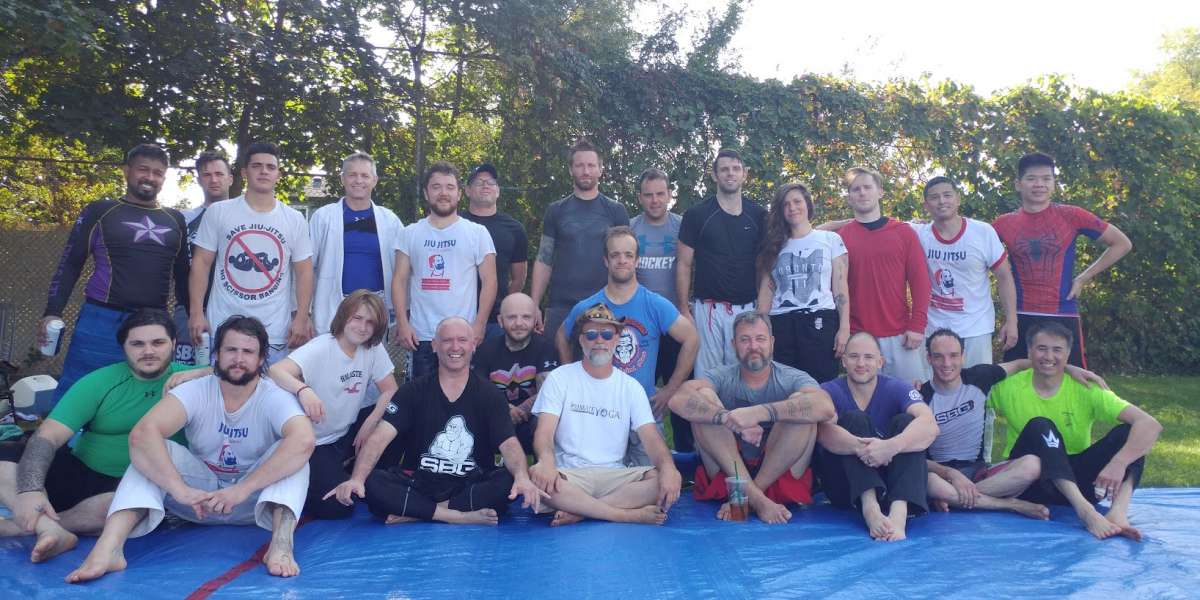Beginning any new pursuit can be intimidating, and beginning a new pursuit in which the goal of the activity is to physically dominate your opponent can be particularly intimidating. As a white belt in jiu-jitsu, which is the beginning rank for all students, there is a lot to learn, which includes not only the techniques of jiu-jitsu but also the conventions, both written and unwritten, which help participants to form such strong bonds with one another.
While SBG Toronto is as welcoming of an environment as one can find to learn Brazilian jiu-jitsu, new students can abide by a few simple guidelines to ensure they become a welcome member of the jiu-jitsu tribe.
Here are three guidelines for being a good jiu-jitsu white belt:
- 1. Be honest about your training history
As a new student you will inevitably be asked, “Have you trained before?” or some other form of the same question. Be honest with your coaches and training partners about your training history. The reason you are asked this question is both conversational and practical. Conversationally, since you are in a jiu-jitsu gym, discussing jiu-jitsu is socially normative.
Practically, it is helpful to know if a training partner is a complete novice or an experienced competitor. In jiu-jitsu training, a good deal of trust is placed in the hands of your training partner. Your partners may want to know your training background simply to gauge how much they can trust you with their bodies.
It is said “ the mats don’t lie”, and therefore your proficiency in the art of jiu-jitsu will be quickly revealed, whether you understated or oversold your experience level. And the fact is that in jiu-jitsu, athletes are used to sparring with others without prior knowledge of their skill level (just show up to a no-gi open mat training session), and so fibbing about your experience offers no great competitive advantage. But when you misrepresent your training background, whatever your motivations, you compromise the trust of your teammates. Just be honest.
- 2. Stick to what you know
Jiu-jitsu is a deep game. As a white belt, you can attend classes regularly for months and still have entire positions that you are unfamiliar with if you have not yet been exposed to them in class. It can be a frustrating experience, especially if you feel like you have been “making gains” in your development, to feel helpless when rolling with a training partner. In these moments, remember to always stick to what you know. When you don’t know what to do, don’t just do it harder, but instead remind yourself of what it is you do know from that position. Sometimes that’s only to breathe – and that’s okay!
This tip also applies to those late-night dalliances with YouTube. We are fortunate to live in a time when BJJ content, whether instructional in nature or otherwise, is plentiful. But looking up techniques on YouTube and then trying them on your training partners during rolling is no substitute for learning a technique via appropriate progressions as experienced in a regular class at SBG Toronto. So leave the online instructionals aside, for now, and focus your development on the positions and technique taught in class.
- 3. Don’t celebrate your taps
You should never outwardly celebrate your submissions in the training room. No, not even your first one, and no, not even if it was a super slick submission that you’ve been training for weeks. It’s just poor form. Celebrating when you tap another while belt just makes you look silly. Celebrating when you tap an upper-belt makes you seem unaware and unappreciative of their training time.
Yes, getting a partner to tap out can feel great. And it’s awesome if you’re excited about getting better at jiu-jitsu. But don’t express your excitement at the expense of a training partner. The old adage “act like you’ve been there before” should be adhered to when it comes to tapping out your training partners.
-Rob Hurtubise is an SBG Toronto member and a middling blue-belt.



